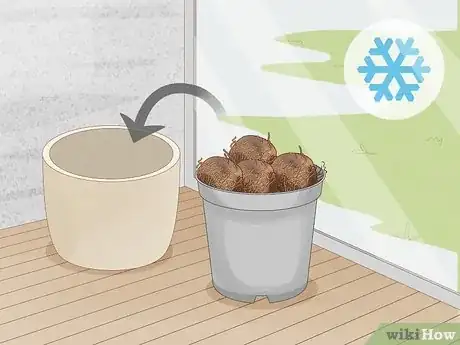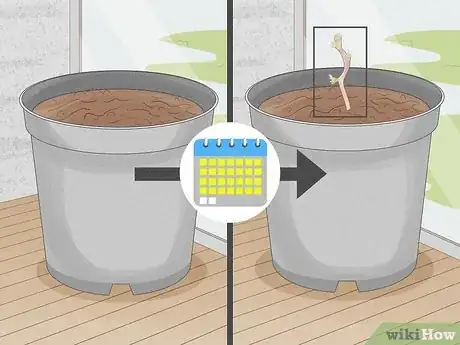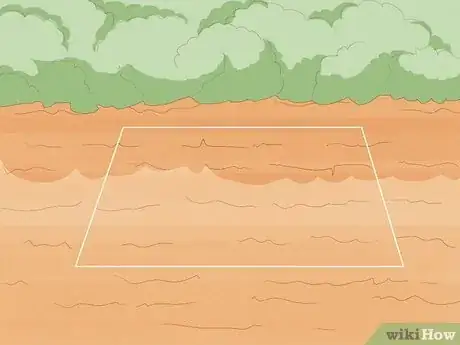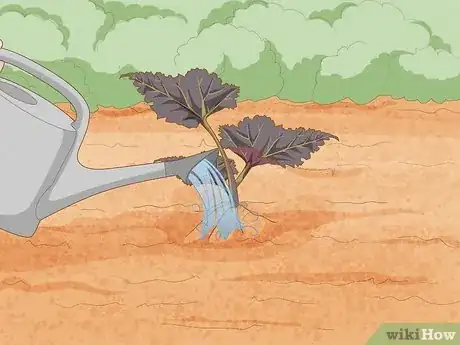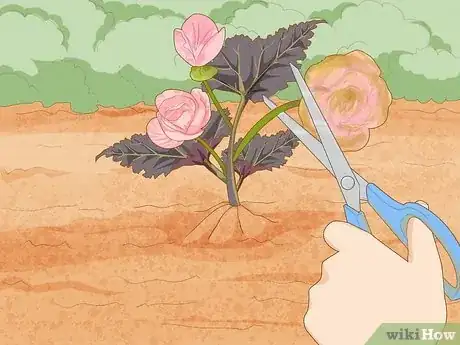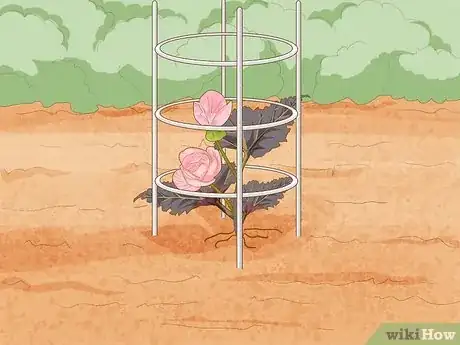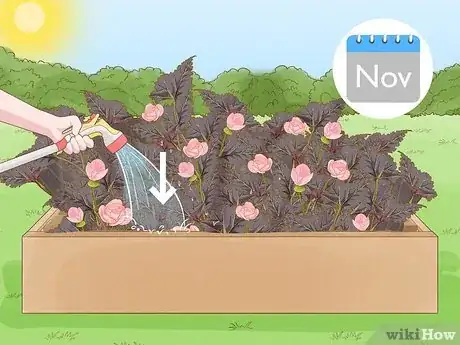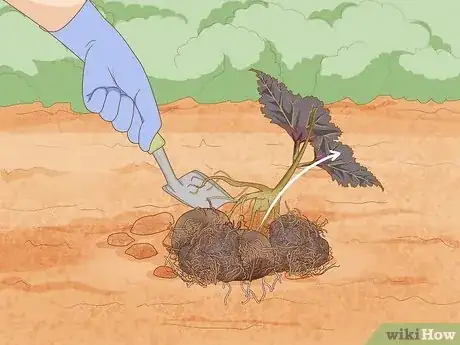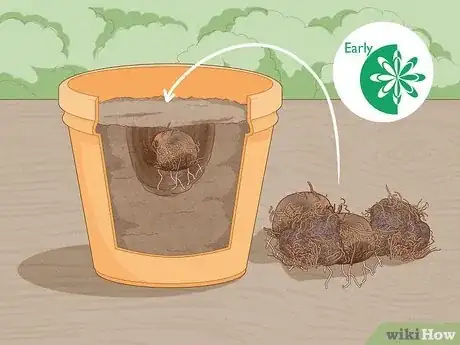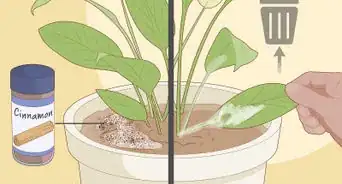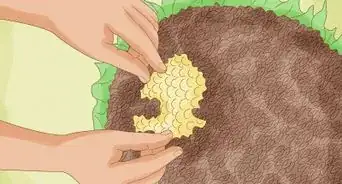This article was co-authored by Katie Gohmann. Katherine Gohmann is a Professional Gardener in Texas. She has been a home gardener and professional gardener since 2008.
wikiHow marks an article as reader-approved once it receives enough positive feedback. This article received 17 testimonials and 100% of readers who voted found it helpful, earning it our reader-approved status.
This article has been viewed 353,427 times.
Tuberous begonias produce beautiful rose-like flowers in a variety of colors. They are started from tubers, which many refer to as bulbs, and should be planted in early spring. Gardeners love begonias because unlike most other flowering plants, they prefer shade over sun. Once they sprout, begonias easily thrive in many different climates.
Steps
Starting Begonias
-
1Purchase tubers (bulbs) by mid winter. Since begonias need to be planted in early spring, the best time to find a good selection is during the winter. There are hundreds of varieties to choose from, but all tuberous begonias require the same care. You may want to look through a catalog or browse online to determine what type of begonias to plant.
- There are over a thousand species of begonias, known to us, and not all of them are tuberous. Other categories of begonias require different care.[1]
- Begonia flowers range in size from half an inch to almost a foot across. They come in every color except for blue.
- Cascading begonia types, such as illumination begonias, are perfect for planting in hanging baskets, since they'll grow over the edge and trail toward the ground. Upright types, like nonstop begonias, grow about a foot tall.[2]
-
2Start the begonias indoors a month before the last frost. In any climate where the temperature drops low enough to cause a frost, you'll need to start the begonias indoors. If you live in a tropical climate that never frosts, you can plant them directly in the ground.
- If you live in an area where the summers tend to be particularly hot, start the begonias early enough so that they will be established before the high summer temperatures.
Advertisement -
3Plant them in small pots or flats. Buy a good potting soil mix that has excellent drainage, such as a peat-moss based mix. Moisten the mix by placing it in a bucket and mixing it with water until it is damp, but not soggy. Place the soil in the pot or flat you're using to start the begonias, stopping 1/2 inch from the rim. Plant the begonia tubers hollow side-up, spaced three inches apart. Cover them with 1/2 inch of the soil mixture.
- Use a 6-inch (15.2 cm) pot for up to two small, 1 to 3-inch (2.5 to 7.6 cm)diameter bulbs or one larger bulb. Use a 10-inch (25.4 cm) pot or basket for three small bulbs.
- If you're unsure which potting soil mixture to buy, get a soilless mixture and mix it 3 parts to 1 part with builder's sand.[3] This will provide the right drainage for begonias.
- Handle the tubers with care, since they may not sprout if they get bruised or damaged. Look for tiny pink buds or an old stem scar if the bulb doesn’t seem to have a hollow. They indicate the top and should face up.
- Make sure the pots or flats you use have drainage holes.
-
4Place the trays or pots in a sunny windowsill and wait for them to sprout. The tubers need bright light, but it shouldn't be direct light or they will get overheated. Keep the soil moist, but not soggy for the next month or so. The tubers should sprout within two to four weeks, and they're ready to plant when the last frost has passed.
- Keep the temperature in the room at 70 degrees or higher. A lower temperature will inhibit the tubers from sprouting.[4]
- If the tuber sprouts grow over two inches tall before the ground has thawed enough to plant them outside, repot them in larger pots to give them room to keep growing. You shouldn't need anything larger than a 12-inch pot. If you plan to grow your begonias in pots, you can simply transplant them to the larger pots you're planning to keep them in.
Planting Begonias
-
1Prepare a planting site. Begonias need to be planted in a place that has partial shade, not full sun or full shade. A little sun is good, but too much will prevent them from blooming. Areas that get early morning or late afternoon sun are best, since the sun is less strong at those times. Look for a spot that's out of the wind, so the fragile blossoms don't blow away when they bloom.
- Your climate matter, too. If you live in a cooler area, your begonias will be able to tolerate more sun than a warmer area.
- If the soil is dry or doesn't drain well, till it to a depth of about five inches and mix in compost or other organic matter to make sure the area has excellent drainage.
-
2Plant the sprouted begonias. Dig holes about two inches deep, spaced eight inches apart. Place the begonias into the holes and lightly pat soil around the tubers. The tubers should be covered with no more than an inch of soil, whether you plant them in the ground or in pots.[5]
-
3Water the begonias when the soil feels dry. Stick your finger about two inches (5 cm) into the soil to see if you feel moisture. If it's dry and dusty, water the begonias well. Try to keep water out of the center of the developing leaf clusters, since this can cause mildew to form. Take care to water near their bases.
- If you're watering potted begonias, water until water flows from the pots drain holes, and dump any drained water that accumulates in a tray or saucer promptly.
- For the biggest, brightest blooms, you may also fertilize the begonias every other week with a fertilizer for blooming plants prepared according to label directions.
-
4Deadhead the begonias regularly. They will bloom throughout the growing season, so attend to them often and pinch off any dead or dying blossoms. This will allow the plant to redirect energy to producing new flowers.
-
5Stake the begonias if necessary. Taller varieties may get so big that they tilt over, and staking can prevent them from breaking. Place a bamboo pole or another stake into the soil a few inches away from the main stem. Attach the stem to the stake using garden twine. As the plant grows, you may need to add more ties to keep it from leaning over. [6]
Growing Begonias as Perennials
-
1Gradually withhold water. As the fall winds to a close in November, water less and less until you stop watering altogether. This will help the begonias go into dormancy for the winter. You may do this with either garden or pot-grown begonias.
- If you live in a hot climate, forced dormancy isn't necessary, as the begonias will survive the winter outdoors. Trim the begonias back for the winter. They'll begin growing again in early spring.
-
2Dig out the tubers. Use a shovel to dig them out with a ball of dirt around them. Set them in a sunny window in a shed or garage for up to a week to let them dry out and cure. Store the tubers in open flats lined with peat moss or sand in a cool, dry place for the rest of the winter.[7]
- Digging the tubers out of the ground is not necessary if you live in a place where the ground never freezes.
-
3Replant the tubers in early spring. Plant them as you originally did, helping them sprout indoors in early spring and then transplanting them outdoors after the last frost has passed and the ground has thawed.
Expert Q&A
-
QuestionMy plants have plenty of leaves but there are no flowers or flower buds. What's wrong with them?
 Katie GohmannKatherine Gohmann is a Professional Gardener in Texas. She has been a home gardener and professional gardener since 2008.
Katie GohmannKatherine Gohmann is a Professional Gardener in Texas. She has been a home gardener and professional gardener since 2008.
Professional Gardener Could be over-fertilized. Could also be too much shade.
Could be over-fertilized. Could also be too much shade. -
QuestionMy begonias got a white leaf fungus or mildew last year and died. Can l prevent or cure this?
 Katie GohmannKatherine Gohmann is a Professional Gardener in Texas. She has been a home gardener and professional gardener since 2008.
Katie GohmannKatherine Gohmann is a Professional Gardener in Texas. She has been a home gardener and professional gardener since 2008.
Professional Gardener It could be powdery mildew. Make sure your plants have a lot of fresh air around them. If your plants are already infected, try 1 tablespoon baking soda in a gallon of water. Spray the solution on begonias every two weeks.
It could be powdery mildew. Make sure your plants have a lot of fresh air around them. If your plants are already infected, try 1 tablespoon baking soda in a gallon of water. Spray the solution on begonias every two weeks. -
QuestionHow do I store begonias for the winter?
 Community AnswerTake them from the garden, brush off all soil, and wrap them in newspaper - placing them in a cardboard box indoors until spring.
Community AnswerTake them from the garden, brush off all soil, and wrap them in newspaper - placing them in a cardboard box indoors until spring.
Warnings
- Don’t let pots with begonia bulbs get too soggy. The bulbs or new stems will rot.⧼thumbs_response⧽
- Very hot, humid climates are not good for tuberous begonias.⧼thumbs_response⧽
Things You’ll Need
- Begonia bulbs/tubers
- Pots
- Potting medium
- Flowering plant fertilizer
References
- ↑ http://www.gardeners.com/how-to/growing-begonias/7126.html
- ↑ http://www.gardeners.com/how-to/growing-begonias/7126.html
- ↑ https://www.whiteflowerfarm.com/how-to-grow-tuberous-begonias
- ↑ http://www.gardeners.com/how-to/growing-begonias/7126.html
- ↑ https://www.whiteflowerfarm.com/how-to-grow-tuberous-begonias
- ↑ https://www.whiteflowerfarm.com/how-to-grow-tuberous-begonias
- ↑ https://www.whiteflowerfarm.com/how-to-grow-tuberous-begonias
- Hogan, Sean, Flora, Portland, Oregon, Timber Press, 2003 pg.224-227
- Editors, Sunset Magazine, Sunset National Garden Book , Menlo Park, CA, Sunset Books, 1997 pg. 206-207
About This Article
To properly plant begonia bulbs, start the begonias indoors in small pots or flats about a month before the last frost. Once the danger of frost has passed, find a shady spot and dig holes about 2 inches deep, spaced 8 inches apart. Place the begonias into the holes lightly pat soil around the tubers. Water the begonias well whenever the soil feels dry. For the biggest, brightest blooms, fertilize the begonias every other week. For tips from our horticulturist reviewer on grow begonias as perennials, read on!

